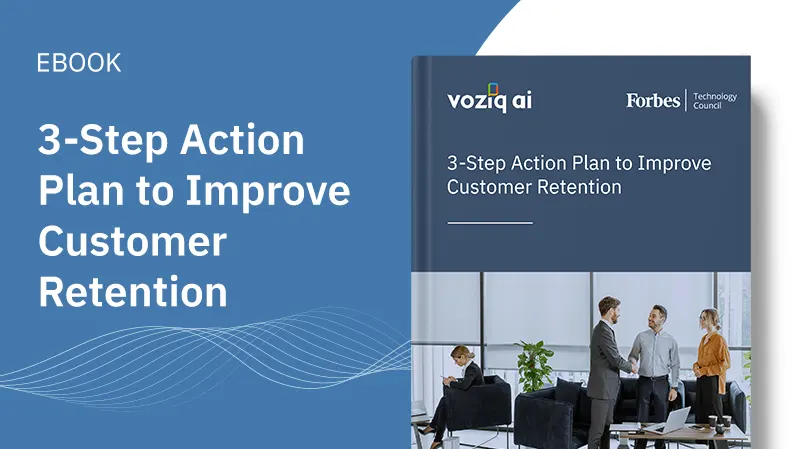Future of Enterprise Contact Centers – Part 3

Future of Enterprise Contact Centers – Part 3
(This is the part 3 of a 3-part series – ‘Future of Enterprise Contact Centers’. Read Part 1 and Part 2.)
In the previous sections of this series, I have highlighted the changing face of the call center industry and the areas that will need your immediate attention to move in the right direction. Since this is the last blog post in this series, let’s discuss one of the most important aspects of customer experience – empathy. At the end of the day, customers are humans with a variety of emotions, and understanding them should be one of the top priorities of any business model.
Operationalizing Empathy
“Empathy is the connection before the solution that leads to solutions,” says Kate Nasser, a customer service expert. The ability to put ourselves in our customers’ shoes tests the humanity of our organizations. The important question here is do customers need more empathy? Let me put it in a better way – do you include the customers’ rating of agents’ empathy to their situation as part of your current quality process? Identifying opportunities or detecting weaknesses is a critical step on the journey to elevate your contact center to one of undeniable importance to the organization.
Lack of Customer Empathy is Widespread
You may be measuring things, but you are likely missing the critical dimension of empathy in your analysis. Case in point is the experience I just had with my internet service provider. 3 weeks ago, my internet stopped working and so a repair order was opened for a Tuesday afternoon. No one showed up. Upon calling the call center, I was informed that my appointment was for the next day. When I tried to argue that I had the mail to prove my point, the agent said that she was sorry while still insisting that I was wrong. In this situation there was no genuine attempt made to understand my situation.
A week later on a Monday, the services were down again. Using the automated services I got an appointment for Thursday, which was too late. So I called the call center to check if I could get an earlier appointment. To my astonishment the agent said that there were no tickets raised for my account number. She promptly raised a ticket for me and gave me a Wednesday appointment. The technician came in 2 hours earlier than the decided time. This was a very minor hiccup. But guess what happened on Thursday? A different technician called about the appointment. It is easy to understand that the automated system had actually raised the order and the contact center did not have this data at their end. The technician listened to my tale and tried to figure out why this happened while being entirely empathetic to my plight. To avoid such confusions in the future, he gave me his direct number and said that he could raise a ticket for me if I ever needed help again.
Once the ticket was closed I received a mail to fill in a survey about my experience. I had no opportunity to indicate how the process failed, how the website and the contact center were out of step, how the agent said what she was supposed to say (and probably got the call monitoring points for apologizing) but I didn’t feel it, or how the field technician connected with us and truly helped to repair the relationship even though he wasn’t the one to fix the phone lines. These are pretty major issues that I suspect are not being quantified by their quality assurance processes, including the survey. So how can you determine when customers need more empathy?
Empathy and Emotional Trigger
Every customer contact point is an opportunity to create an emotional trigger. It occurs not necessarily when a customer’s issue is resolved, but when the customer is made to feel special and wanted. Customers then connect with the services and perceive the brand’s value emotionally. These triggers also help to maintain the organization’s reputation by improving a customer’s perception of the engagement. Ease of resolution is a primary concern that will influence the customer’s view of the organization’s services, but it’s not where the desired experience should end. Contact centers can either recover or lose a customer’s loyalty. Through better personalizing offerings, organizations can create more opportunities for emotional triggers.
In a recent call center survey it was found that as many as 40% of all contact centers still have no tools to analyze data. A central challenge in getting the most useful analytics and maximum return on investment from your technology is when your data is isolated into silos. When embarking on this journey, think of your contact center as an integral part of your enterprise architecture. New channels introduced into your contact center must be integrated with existing channels, as well as wider business processes. Information is power!
Measuring Empathy Towards Customers
Crucial nuances of the customer experience need to be assessed by the customer. Analytics of that information leads to customized improvement plans for both teams and individual agents. The proper measurement components in your Quality Assurance program can uncover people, process, and technology issues that enable them to be objectively addressed. If your agents are not effective empathizers, the relationship is at risk and the brand is tarnished. Agents need to have a clear understanding of when customers need more empathy and how to deliver it. If not delivered properly, your brand becomes at risk. Giving people permission and the necessary information for how to empathize will provide not only comfort to customers who receive it, but also to your employees who are feeling the pinch themselves. The humanity and humility that comes with acknowledging this condition will bring you closer to both your employees and your customers.









